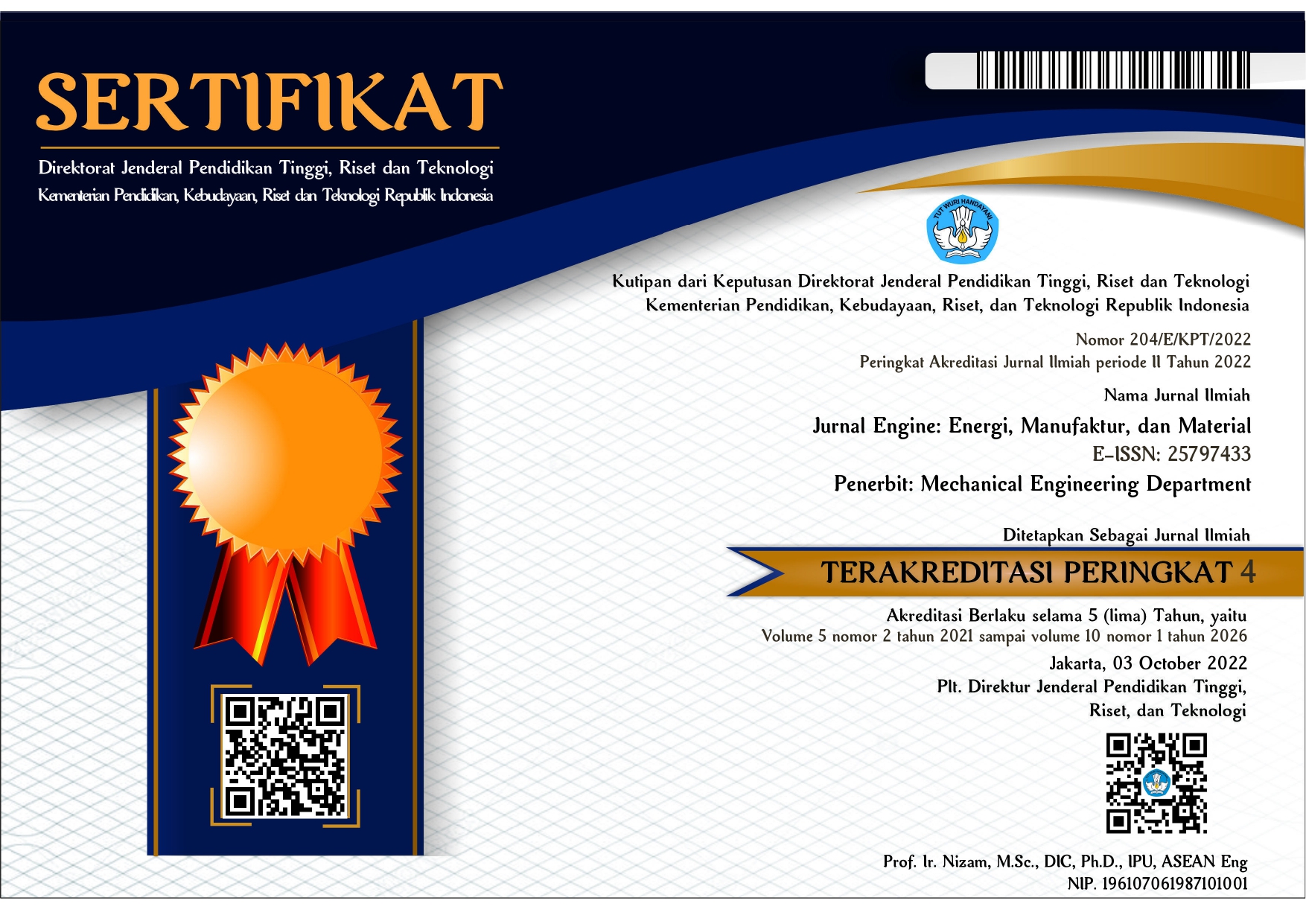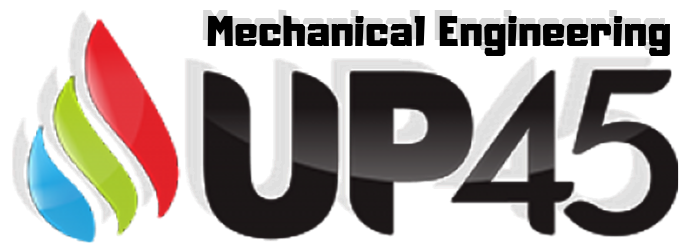Studi Permukaan Produk Berbahan PLA Hasil Fabrikasi Menggunakan Mesin 3D Printer Jenis Fused Deposition Modelling (FDM) dengan Variasi Kecepatan Printing
DOI:
https://doi.org/10.30588/jeemm.v7i2.1575Keywords:
fused deposition modelling, surface analysis, PLAAbstract
A study of the surface of the fabrication process using the fused deposition modeling (FDM) technique is needed to determine the suitability of the process parameters with the use of the product to be made. Products that have special characteristics that take advantage of the surface properties of fabricated using FDM are often encountered in technical applications involving fluids. This research is a preliminary study of the Water Contat Angle (WCA) study on polymer filaments made of PLA. In this study, the effect of printing speed on the width of polymer deposition and the gap distance between one deposit and another polymer deposit on the sample surface was observed and analyzed using image processing techniques. The printing speed is made to vary from 30 mm/s, 60 mm/s, and 90 mm/s. The relationship between printing speed and polymer deposition width produces a linear equation y = 0.0008 x + 0.28 and the gap width between filament deposition on the sample surface shows a linear equation relationship y = -0.0002 x + 0.0833
References
Akindoyo, J. O., Hossen Beg, M. D., Ghazali, S., & Islam, M. R. (2016). The effects of wettability, shear strength, and Weibull characteristics of fiber-reinforced poly(lactic acid) composites. Journal of Polymer Engineering, 36(5), 489–497. https://doi.org/10.1515/polyeng-2015-0215
Alcácer, V., & Cruz-Machado, V. (2019). Scanning the Industry 4.0: A Literature Review on Technologies for Manufacturing Systems. Engineering Science and Technology, an International Journal, 22(3), 899–919. https://doi.org/10.1016/j.jestch.2019.01.006
Chen, Y., Sun, Z. B., Li, Y. S., Lin, H., Li, Y., Pan, M., Zhong, G. J., & Li, Z. M. (2020). Tuning wettability and mechanical property of polylactide composite films with in-situ nanofibrils of poly(butylene adipate-co-terephthalate). Composites Communications, 22(October). https://doi.org/10.1016/j.coco.2020.100515
Han, S., Sung, J., & So, H. (2020). Simple Fabrication of Water Harvesting Surfaces Using Three-Dimensional Printing Technology. International Journal of Precision Engineering and Manufacturing - Green Technology, 0123456789. https://doi.org/10.1007/s40684-020-00263-x
Jiang, C., & Zhao, G. F. (2015). A Preliminary Study of 3D Printing on Rock Mechanics. Rock Mechanics and Rock Engineering, 48(3), 1041–1050. https://doi.org/10.1007/s00603-014-0612-y
Matsuzaki, R., Kanatani, T., & Todoroki, A. (2019). Multi-material additive manufacturing of polymers and metals using fused filament fabrication and electroforming. Additive Manufacturing, 29(February). https://doi.org/10.1016/j.addma.2019.100812
Modi, U., & Prakash, S. (2019). Wettability of 3D printed polylactic acid (PLA) parts. AIP Conference Proceedings, 2148(September). https://doi.org/10.1063/1.5123974
Mohd Nizar, M., Hamzah, M. S. A., Abd Razak, S. I., & Mat Nayan, N. H. (2018). Thermal Stability and Surface Wettability Studies of Polylactic Acid/Halloysite Nanotube Nanocomposite Scaffold for Tissue Engineering Studies. IOP Conference Series: Materials Science and Engineering, 318(1), 0–8. https://doi.org/10.1088/1757-899X/318/1/012006
Nazir, A., Gokcekaya, O., Md Masum Billah, K., Ertugrul, O., Jiang, J., Sun, J., & Hussain, S. (2023). Multi-material additive manufacturing: A systematic review of design, properties, applications, challenges, and 3D printing of materials and cellular metamaterials. Materials and Design, 226. https://doi.org/10.1016/j.matdes.2023.111661
Rehmani, M. A. A., Jaywant, S. A., & Arif, K. M. (2021). Study of microchannels fabricated using desktop fused deposition modeling systems. Micromachines, 12(1), 1–20. https://doi.org/10.3390/mi12010014
Sathies, T., Senthil, P., & Anoop, M. S. (2020). A review of advancements in applications of the fused deposition modeling process. Rapid Prototyping Journal, 26(4), 669–687. https://doi.org/10.1108/RPJ-08-2018-0199
Downloads
Published
How to Cite
Issue
Section
License
Authors who publish with Jurnal Engine: Energi, Manufaktur, dan Material agree to the following terms:
Authors retain copyright and grant the Jurnal Engine: Energi, Manufaktur, dan Material right of first publication with the work simultaneously licensed under a Creative Commons Attribution 4.0 International License that allows others to share (copy and redistribute the material in any medium or format) and adapt (remix, transform, and build upon the material) the work for any purpose, even commercially with an acknowledgment of the work's authorship and initial publication in Jurnal Engine: Energi, Manufaktur, dan Material. Authors are able to enter into separate, additional contractual arrangements for the non-exclusive distribution of the journal's published version of the work (e.g., post it to an institutional repository or publish it in a book), with an acknowledgment of its initial publication in Jurnal Engine: Energi, Manufaktur, dan Material. Authors are permitted and encouraged to post their work online (e.g., in institutional repositories or on their website) prior to and during the submission process, as it can lead to productive exchanges, as well as earlier and greater citation of published work (See The Effect of Open Access).


















